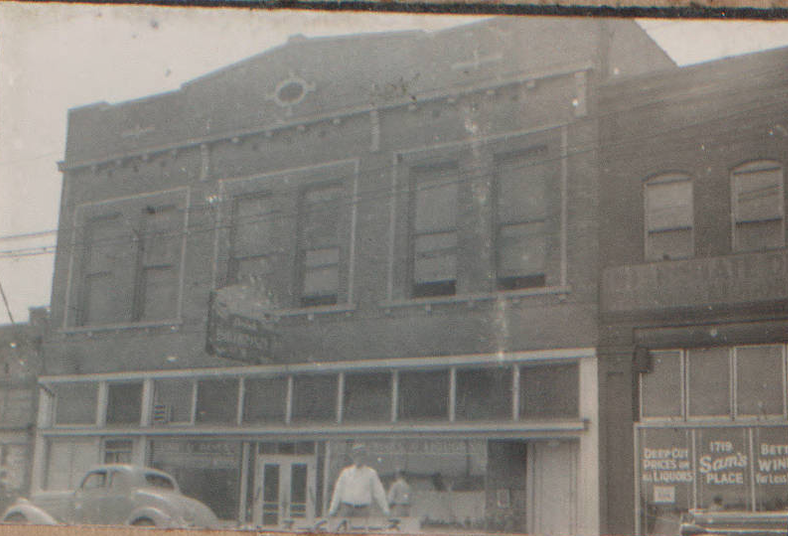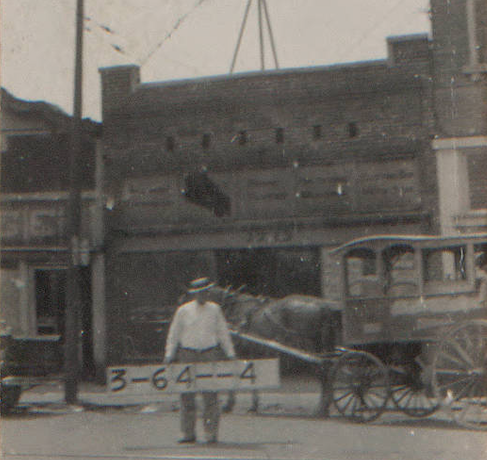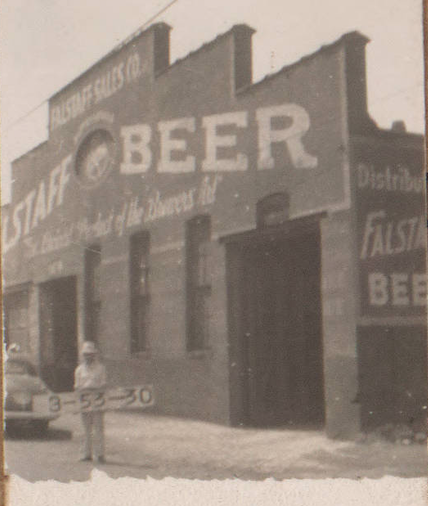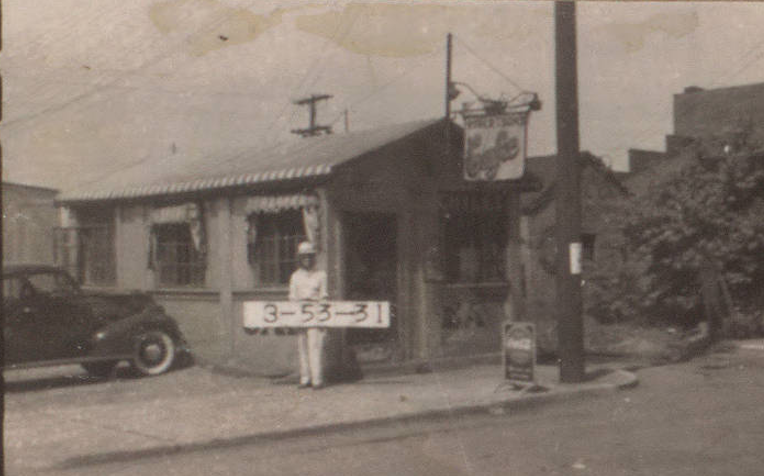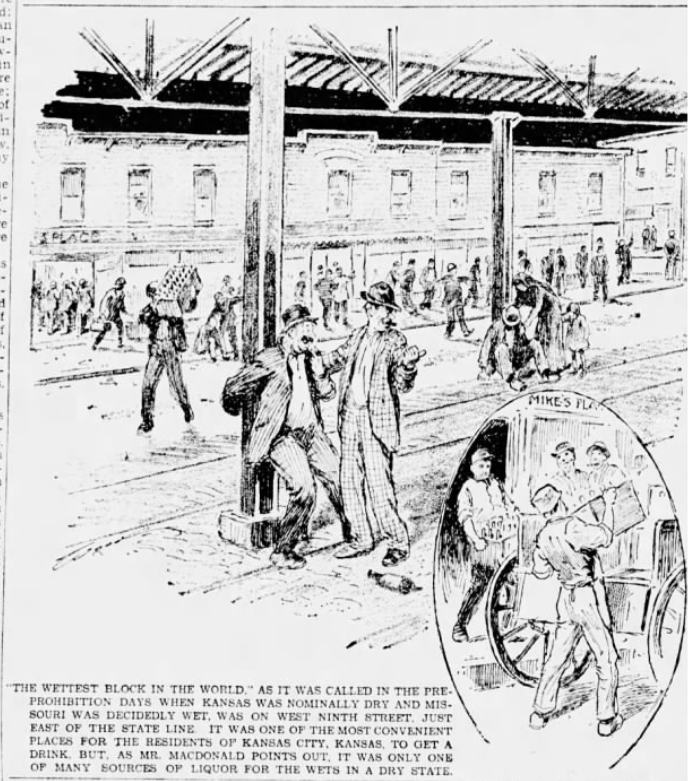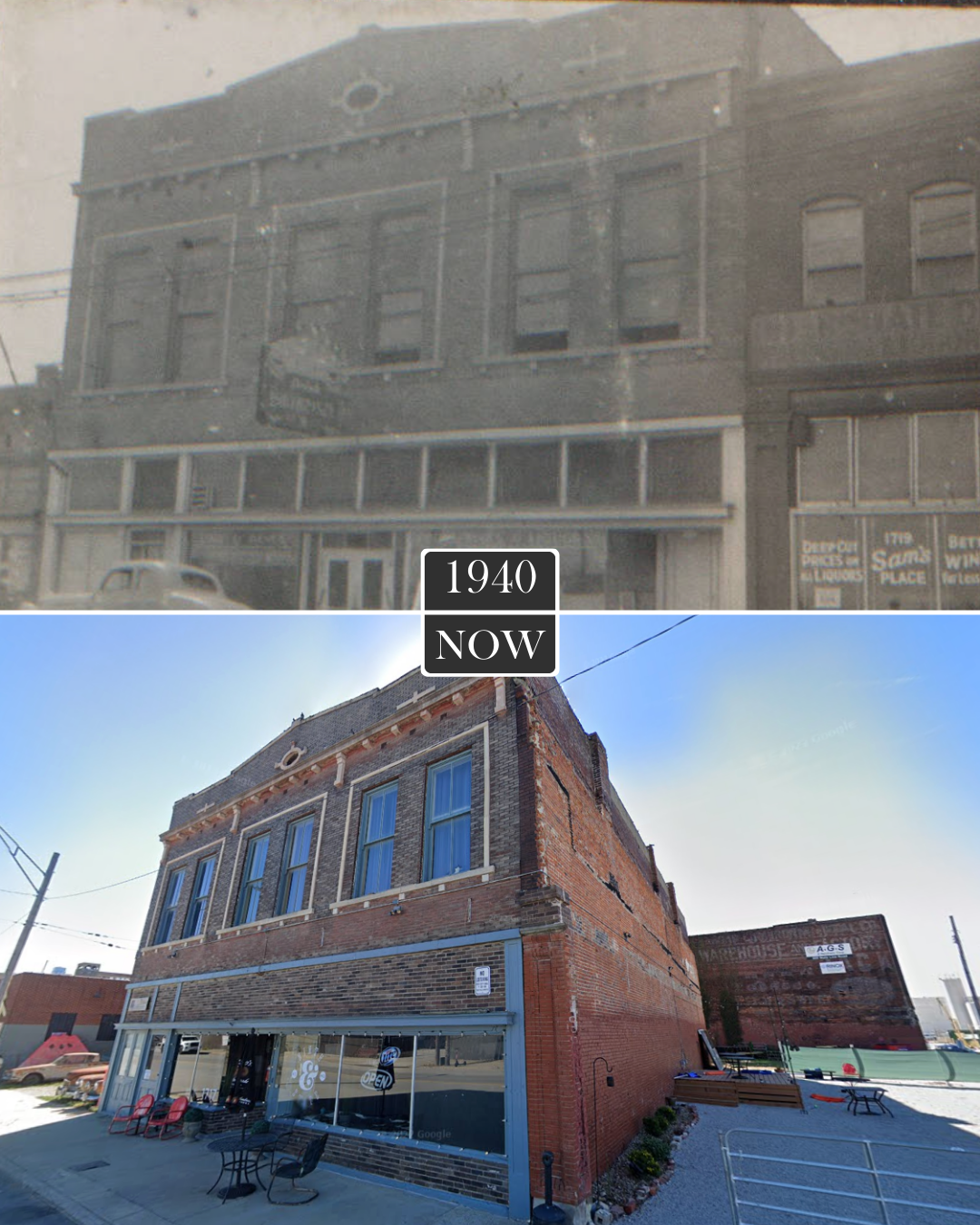“The Wettest Block in The World” - Exploring Kansas City’s Notorious Past at 9th & State Line
The Wettest Block in the World - Where Missouri Sells Liquor to Kansas. Click to enlarge.
Travel back in time to the early 1900s, 50 years after officially Kansas City officially incorporated and 100 years after Lewis & Clark originally visited the area. What started as a trading post on the Missouri River was coming of age as a thriving national metropolis with a diverse, growing population and ample opportunities for work, specifically in the industrial West Bottoms area.
The West Bottoms was a melting pot of different immigrant communities, each bringing their own cultural traditions, dreams of a better life, and entrepreneurial spirit. The area was dotted with small businesses, shops, and factories, as well as numerous boarding houses and tenements to accommodate the growing population. Long hours, scorching hot summers, and brutally cold winters were the norm. The American Dream was alive and well in the West Bottoms, with opportunities and entrepreneurs on every corner.
At one point in the early 1900s, 25 saloons operated concurrently on 9th Street between State Line and Genesee Street. Once the factories and railyards released their workers for the day, a mob of sweaty, thirsty laborers would swarm the block like a colony of bees. Adding further fuel to the fire, Kansas had been a dry state since the early 1880s, meaning alcohol-deprived Kansans were forced to cross State Line quench their thirst. All of these factors created a perfect storm that came together at 9th and State Line.
1907: The ‘Wettest Block’ at 12 - Kansas City Times. Click here to enlarge and read the full newspaper clipping.
The passage of the Volstead Act in 1920, which enforced Prohibition nationwide, had a profound impact on Kansas City. The city's insatiable thirst for alcohol remained unquenched, leading to the rise of illegal drinking establishments known as speakeasies. It was during this time that the block at 9th and State Line truly became a hotbed for illegal activity of all kinds, including bootlegging, prostitution, gambling, and more.
Entrepreneurs recognized the lucrative opportunity to cater to the demand for alcohol, and speakeasies started popping up throughout the area. The block became a magnet for bootleggers, who smuggled liquor from neighboring states and distributed it to the speakeasies that lined the streets. This illicit trade gave birth to a thriving underground economy, with the 9th and State Line at the epicenter.
1940: A collection of bars and local businesses near 9th and State Line. Click to enlarge. Courtesy MVSC/KC Library.
Tom Pendergast's Reign of Power in the Wettest Block
The success of the "Wettest Block" was intertwined with the rise of Tom Pendergast, a charismatic and influential political boss. Pendergast saw the potential in embracing the vice industry and recognized the financial benefits it could bring to his political machine. He built a network of corruption and patronage, controlling city politics and law enforcement, effectively providing protection for the illegal activities taking place on the block.
1936: Senator Harry Truman and Tom Pendergast at the Democratic National Convention
Under Pendergast's rule, the block flourished. It became a hub of vice, not only for alcohol but also for gambling, prostitution, and other illicit activities. The police turned a blind eye to the goings-on, as they were on Pendergast's payroll, ensuring that the block continued to thrive without interference.
1907: Kansas City Times article about the police turning a blind eye to illegal activities at 9th & State Line.
Speakeasies, Gambling Dens, and High-Profile Criminals
As the "Wettest Block" gained notoriety, it evolved beyond its bootlegging origins. The speakeasies attracted a mix of high-rollers, celebrities, and ordinary citizens seeking excitement and escape. The block became a destination for entertainment, offering a wide array of gambling games, live music, dancing, and risqué performances.
The "Wettest Block" attracted a colorful cast of characters, from underworld figures to entertainers and politicians. One notable figure was Johnny Lazia, Tom Pendergast's trusted enforcer, who maintained order and ensured that the block's activities ran smoothly. Lazia was known for his connections to organized crime and played a key role in protecting the interests of Pendergast's empire.
The block also became a haven for infamous criminals seeking refuge from law enforcement. Figures such as Charles "Pretty Boy" Floyd and John Dillinger were rumored to have frequented the area, finding shelter and camaraderie among the criminal underworld that operated within the block.
Taverns serving Rochester, Schlitz and Heim brand beers in the 1700 block of West 9th Street, under the 9th Street elevated rail line. Courtesy Historic West Bottoms Association / KCUR
The Downfall and Legacy
The "Wettest Block" reached its peak during the first few decades of the 20th century. However, the winds of change were blowing, and the days of unbridled vice were numbered. The federal government intensified its efforts to enforce Prohibition, and public sentiment turned against the rampant corruption and lawlessness associated with the block.
In 1933, Prohibition was repealed, and legal drinking establishments once again became the norm. With the end of the speakeasies, the block's prominence gradually waned. Tom Pendergast's empire eventually crumbled, as he was convicted of income tax evasion in 1939, marking the end of an era.
1929: Kansas City Times newspaper clipping.
Today, the block at 9th and State Line in Kansas City, once infamous for its illicit activities, has transformed. While the remnants of its past can still be seen in the architecture and historical markers, the West Bottoms has been revitalized in recent years. It now houses an eclectic mix of businesses, shops, and cultural attractions, embracing its history while moving forward.
The legacy of the "Wettest Block" serves as a reminder of the city's complex past, the struggles and aspirations of its diverse population, and the influence of powerful figures like Tom Pendergast. The stories of the block continue to fascinate locals and visitors alike, preserving the spirit of a bygone era and reminding us of the enduring allure of the human desire for excitement and the pursuit of dreams.
Then vs. Now: Ninth & State
PS: if you’re enjoying these articles, sign up for Stories from the City, the exclusive newsletter from kcyesterday.com with stories about the mafia, architecture, prohibition, sports, and everything in between. It’s completely free!
